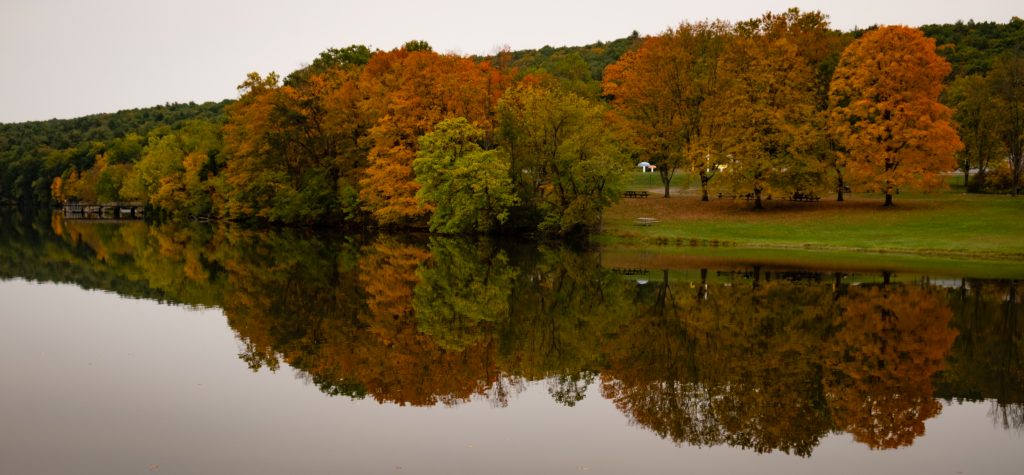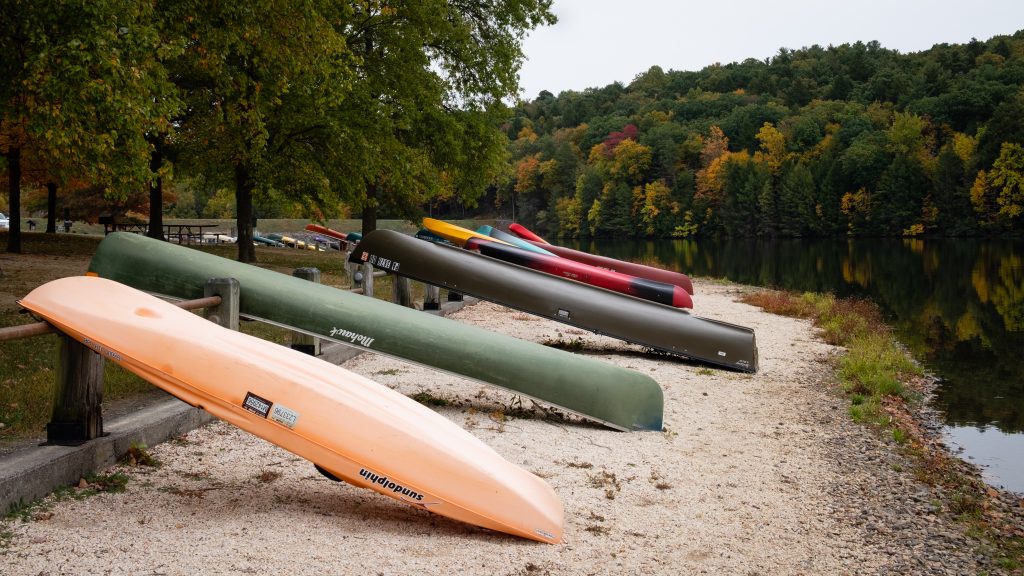This post is a beginning of a series on some central Pennsylvania state parks that I visited in October. The first up is Little Buffalo State Park in Newport, Perry County, PA. The visitor to Little Buffalo can partake of campgrounds, a swimming pool, a lake, hunting, fishing, picnicking and hiking. The park is 923 acres and was opened in 1972. It also features some historical sites which we’ll take a look at below.
Little Buffalo State Park is named for Little Buffalo Creek which runs through the park. The creek and the nearby Buffalo Ridge are named for the bison that are believed to have once roamed the ridge and valley region of Pennsylvania. Humans have lived in what is now Pennsylvania since at least 10,000 BC. The first settlers were Paleo-Indian nomadic hunters known from their stone tools. The hunter-gatherers of the Archaic period, which lasted locally from 7000 to 1000 BC, used a greater variety of more sophisticated stone artifacts. The Woodland period marked the gradual transition to semi-permanent villages and horticulture, between 1000 BC and 1500 AD. Archeological evidence found in the state from this time includes a range of pottery types and styles, burial mounds, pipes, bows and arrow, and ornaments. Perry County was part of the Albany Purchase of 1754 when the colonists purchased a large tract of land from the Iroquois League of Six Nations.






European settlers arrived in the area in force after the Revolutionary War. John Koch, one of the first to farm the area in the 1790s, opened the Blue Ball Tavern in 1811. The tavern offered food, drink, and a sleeping loft. The Blue Ball Tavern served as a rest stop for messengers who travelled between Carlisle and Sunbury during the War of 1812. It is rumored that the tavern was where the plans for the creation of Perry County were made in 1821. The tavern was closed in 1841. A farmhouse was built in 1865 on the foundation of the tavern. Some recycled boards and hardware from the tavern were used in the construction of the farmhouse which currently houses the Blue Ball Tavern Museum and a library that are operated by the Perry County Historical Society.

William Shoaff bought 63 acres of land in the area and a gristmill from the Juniata Iron Works in 1849 after it had been shut down. The local farmers brought their crops to Shoaff’s Mill until the 1940s. The mill has since been restored and is back in operation. Visitors to the park can observe the milling of cornmeal, cracked corn and the grinding of apples for apple cider.


For me, not surprisingly, a covered bridge was one of the highlights. This is Clay’s Covered Bridge. It is a short walk from a parking area on your way to the mill.


